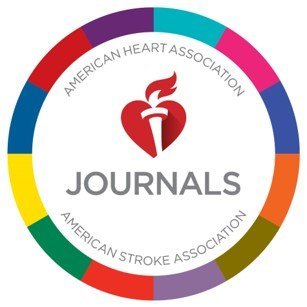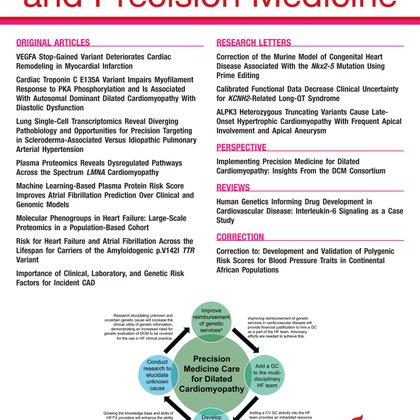
Usman Tahir
@UTahirMD
Followers
431
Following
1K
Media
38
Statuses
205
Director of #CardioGenetics & Co-Director of #HCM @BidmcCvi | Asst Professor @HarvardMED |#PrecisionMedicine & #Omics
Joined June 2020
🧬Thanks @jclinicalinvest for highlighting our work integrating #genetics, proteomics and #EHR
https://t.co/cEsGs9LkLE in the editorial: “The importance of diverse multiomic datasets and analyses” https://t.co/WmnLa3eDf0 *But why is diversity so important in #omics?* (1/n)
2
7
15
Proud of Cardiogenetics counselor @caitlin_finnn as she presents on Sudden cardiac arrest @ National Society of GC conference. Caitlin is an instrumental part of our Genetics program @BidmcCvi @DrPRao and a strong advocate for our genetics patients and their families.
Honored to have had the opportunity to present at the NSGC conference this year alongside an incredible team! #GCchat #CardioGen #cardiotwitter
1
1
8
6 patients dosed with single infusion of TN-01 via AAV vector to deliver functional copy of MYBPC3. Positive signals with reductions in hypertrophy, well tolerated, reversible liver enzyme ⬆️. Long term f/u ongoing.
0
0
3
Link to article: https://t.co/P4LHQDRf8K Thanks to all mentors, contributors and cohort participants of JHS and Cardiovascular Health Study Rob Gerszten @AartiAsnaniMD @SwirskiLab
jacc.org
0
0
2
A nice editorial by @MariosGeorgakis highlights the utility of the multi-omics approach to new biology. As noted, we did not find genetic direct genetic evidence for SECTM1 --> CHD, highlighting the need for studies to work out the potential CHD pathways. https://t.co/B8ZCzVJS7S
2
3
7
Next, we performed in vivo studies in mice, showing that rSECTM1a increases circulating levels of monocytes, and specifically of pro-atherogenic ly6chi monocyte subsets, compared to PBS, highlighting a potential SECTM1 to CHD pathway
1
0
0
We then perforemd a GWAS of SECTM1 and identified a cis-pqTL for its circulating levels. Using large biobank population studies, we found the sentinel variant for SECTM1 levels associated with percentage of circulating monocytes, key drivers of atherosclerosis.
1
0
0
We validated our findings with incident CHD in the Cardiovascular Health Study, a predominately white and older population compared to JHS, supporting its generalizability across populations.
1
0
0
We screened the plasma proteome using Somascan to identify new inflammatory biomarkers of CHD risk in the @NIH @JHS_HeartStudy. We identified SECTM1, a poorly studied protein, previously implicated as a monocyte chemoattractant, as associated with incident CHD.
1
0
0
Inflammation plays a key role in contributing to residual risk for CHD. Emerging targets and pathways in recent years for CHD have shown promise for modulating inflammatory pathways to reduce CHD burden.
1
0
0
🚨Excited to share our new study out in @JACCJournals Basic to Translational Science, where we integrate proteomics, genetics and in-vivo functional studies to identify SECTM1 as a novel regular of circulating monocyte levels associated with coronary heart disease 🧵
3
5
15
How do we differentiate athlete’s heart from hypertrophic cardiomyopathy? One of the key questions in sports cardiology. A 15-minute primer on how to use echocardiography to tell the difference. 🎥
3
4
19
This is a cool paper, but not sure if the findings are impressive enough to be too excited about. The authors used a GWAS of a pain phenotype and decided to study a gene (SLC45A4) at a specific locus in detail. The genetic association itself is robust, replicates across
nature.com
Nature - The SLC45A4 gene encodes a neuronal polyamine transporter and is linked to pain response in humans and mice.
A massive genetic study in @Nature just identified why chronic pain hits some people harder than others. They discovered the first neuronal “pain transporter” - and it could unlock entirely new ways to treat pain. 🧵
2
26
130
Hot off the press! Check out the August edition of @Circ_Gen 📖featuring the latest original articles, research letters, & reviews, from everything from cardiomyopathy❤️to aortic disease & pulmonary 🫁 HTN https://t.co/uSxrK15VHB
@AHAScience #AHAjournals #CardioTwitter #Genetics
0
3
17
Link: https://t.co/CcVNtvXjsJ Thanks to an amazing team: @neallakdawala @danielreichart3 Rob Gerszten; Kricket Seidman; Carolyn Ho et al
ahajournals.org
BACKGROUND: Pathogenic variants in the lamin A/C (LMNA) gene cause an aggressive form of dilated cardiomyopathy (DCM), marked by higher rates of advanced conduction disease, malignant ventricular...
0
0
2
We also found dysregulated pathways linked to microtubule integrity, in both DCM and phenotype negative carriers. Lamin A/C proteins are critical in maintaining nuclear -microtubule/cytoskeletal integrity and disruption may indicate early pathology in LMNA disease
1
0
3
We identified several proteins increased across LMNA DCM, end stage HF (RNA X) and LMNA mutations carriers including EDA2R, recently linked to skeletal muscle atrophy and MYL4 which helps regulate cardiac muscle contraction and linked to AF
1
0
1
We profiled ~3000 plasma proteins in individuals with LMNA DCM. We found proteins upregulated in both plasma and their corresponding single cell expression data in end-stage LMNA DCM identifying concordant molecular signatures between plasma and heart tissue.
1
0
2







